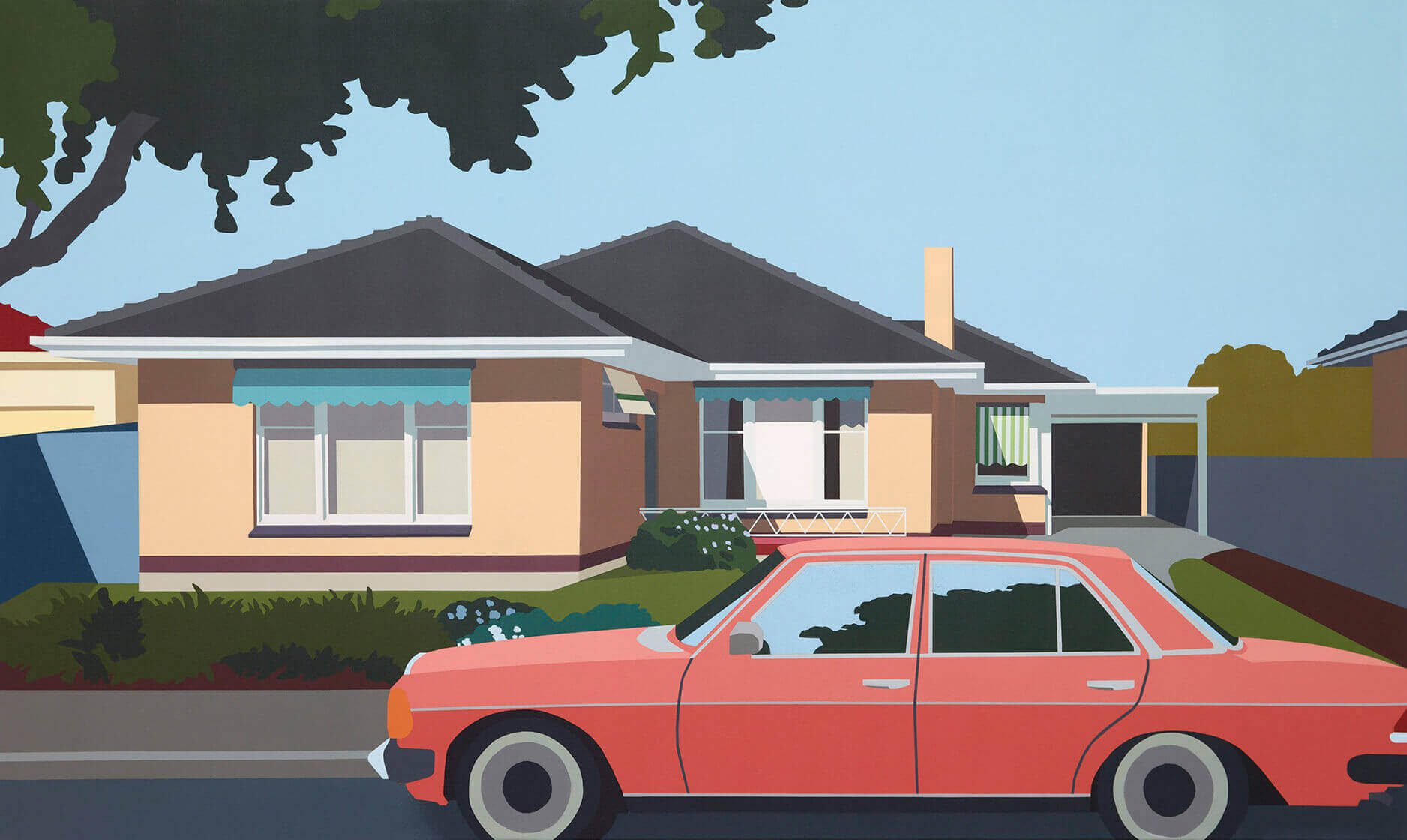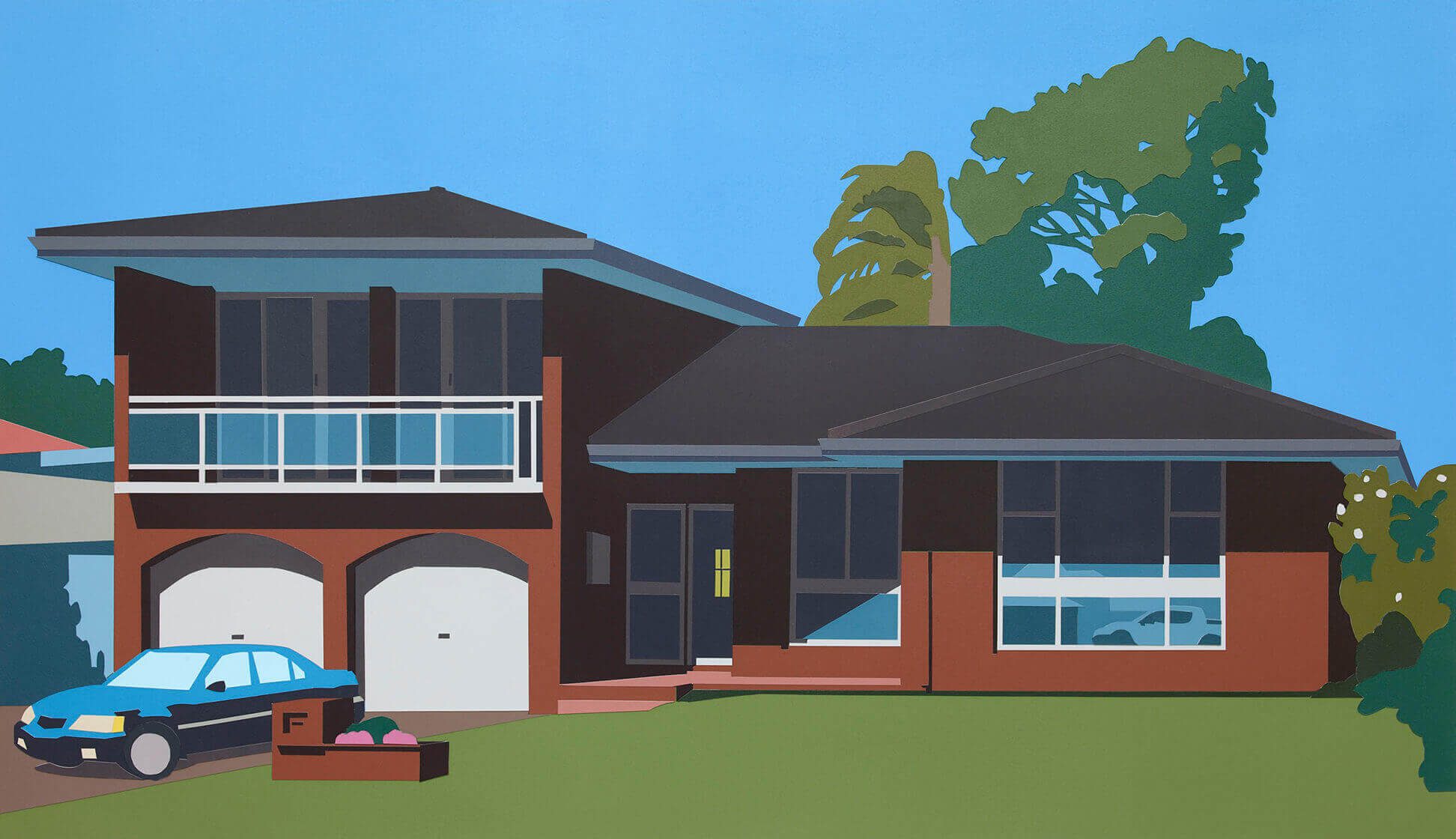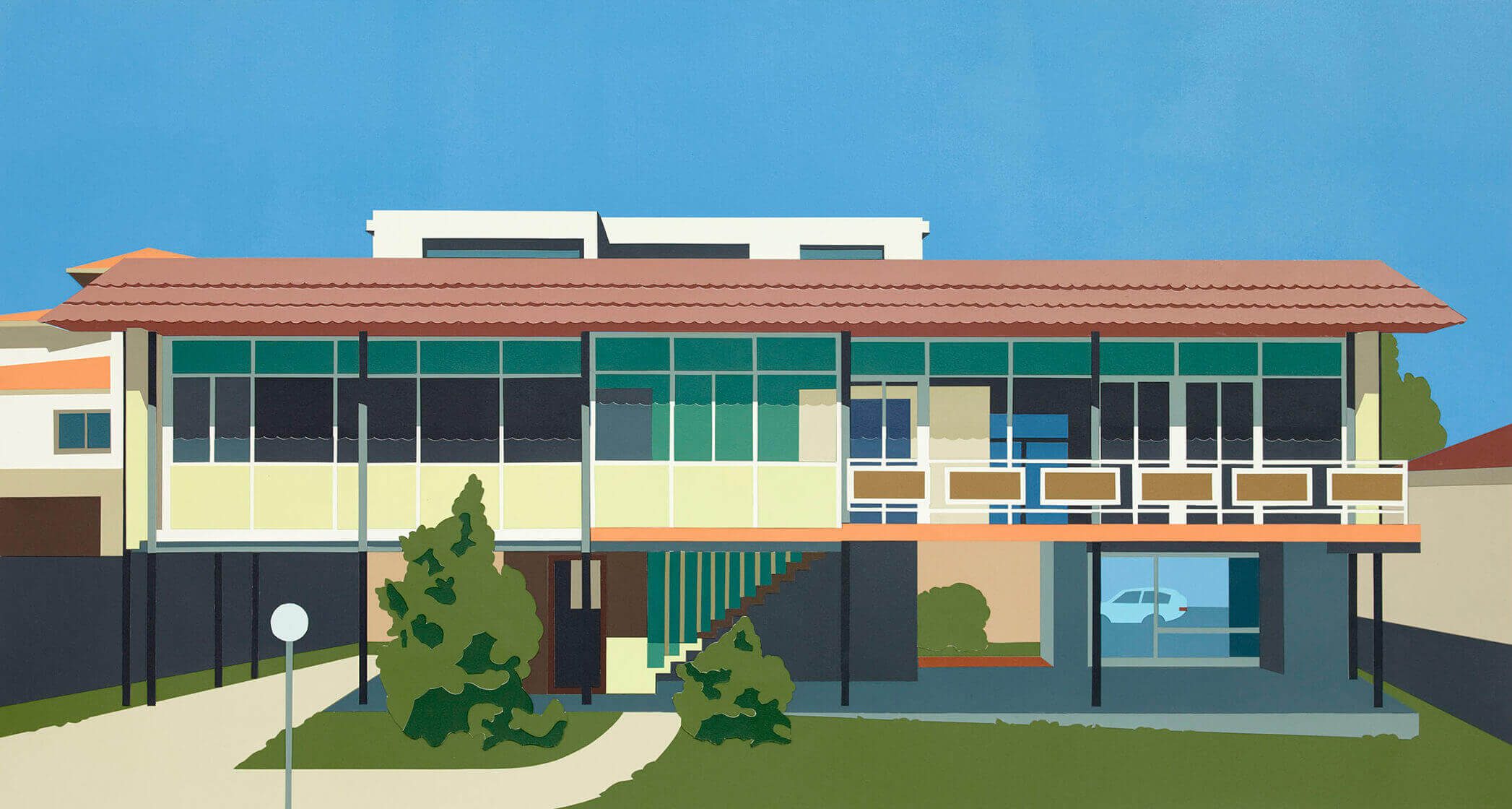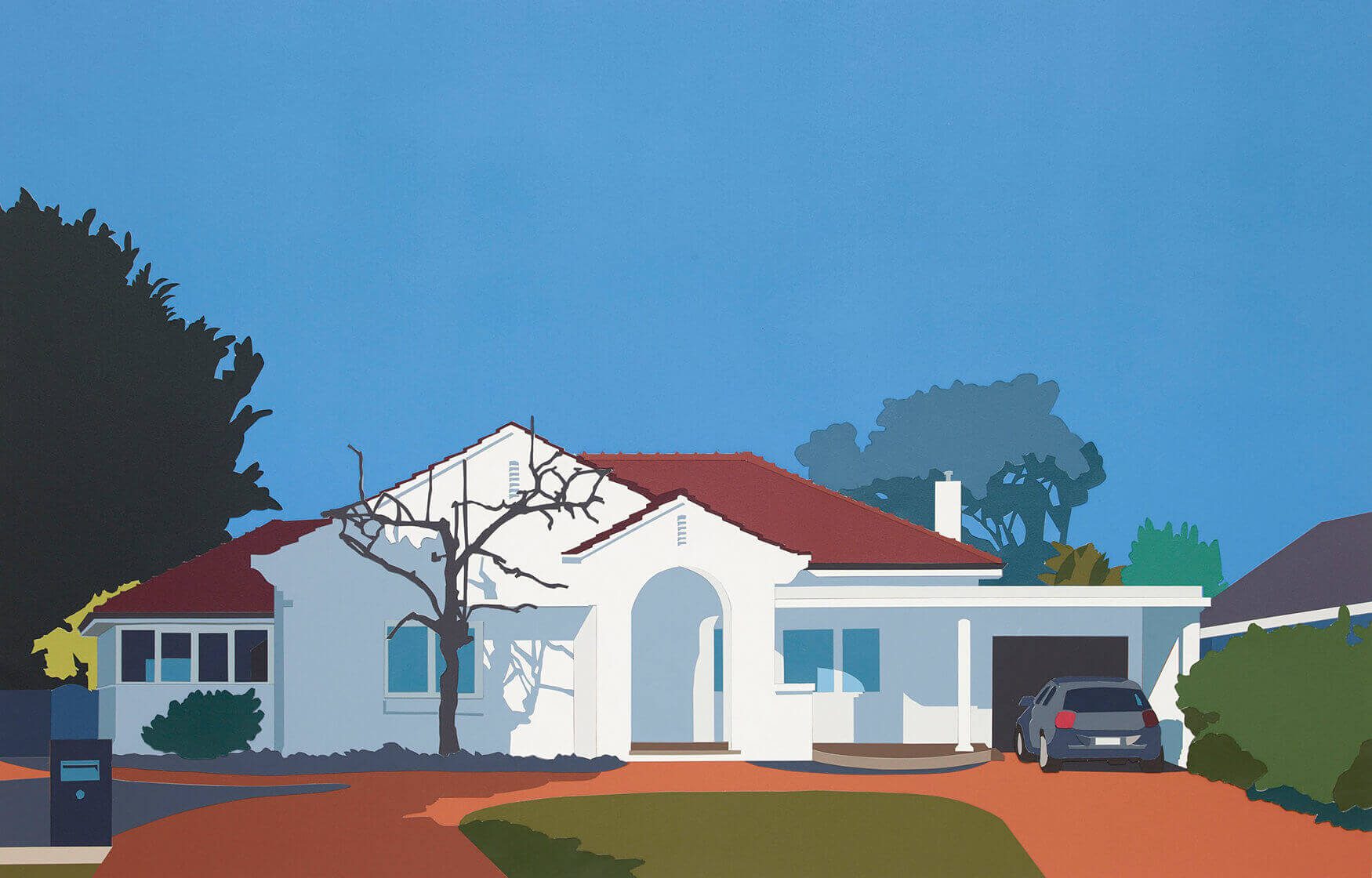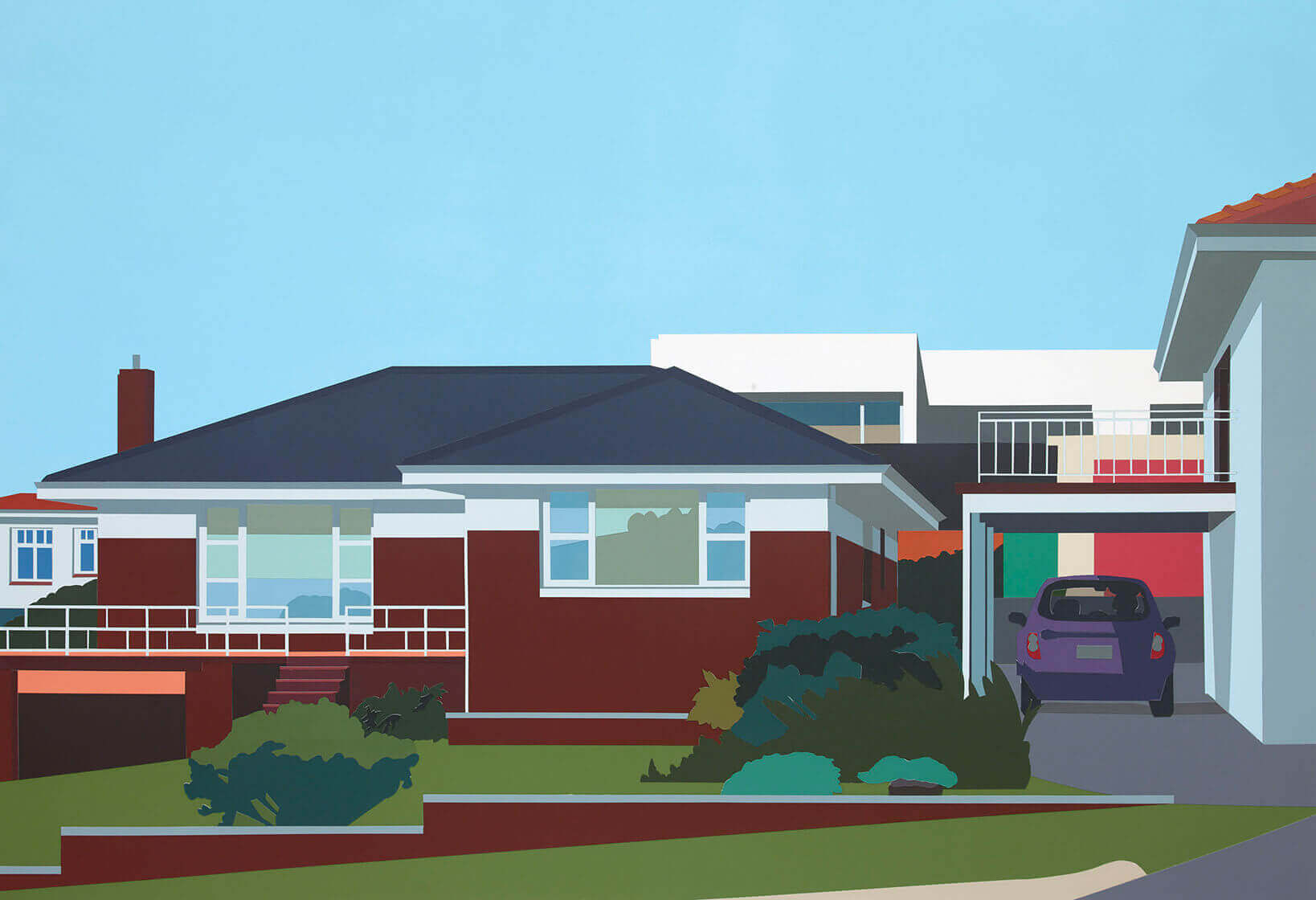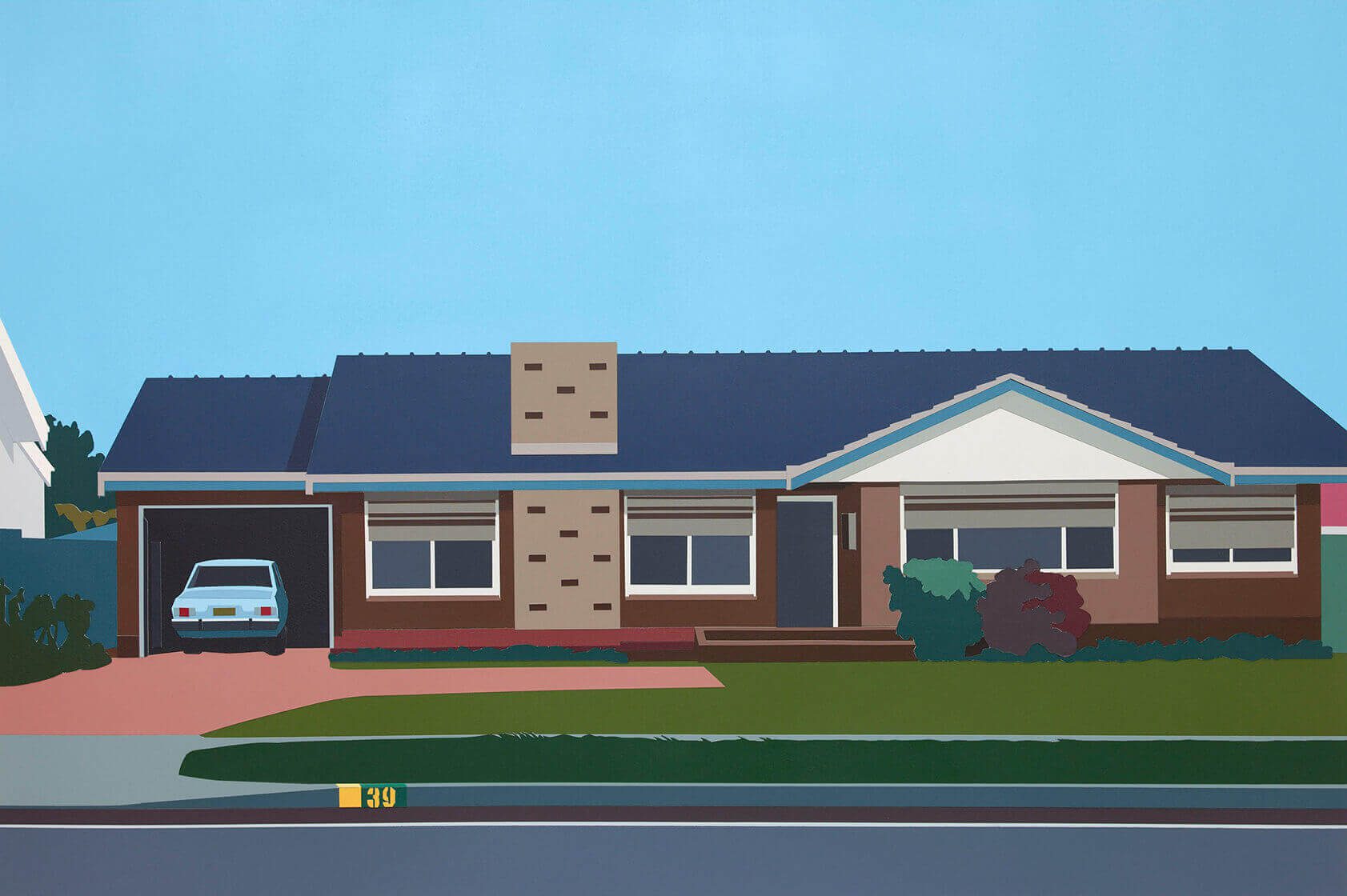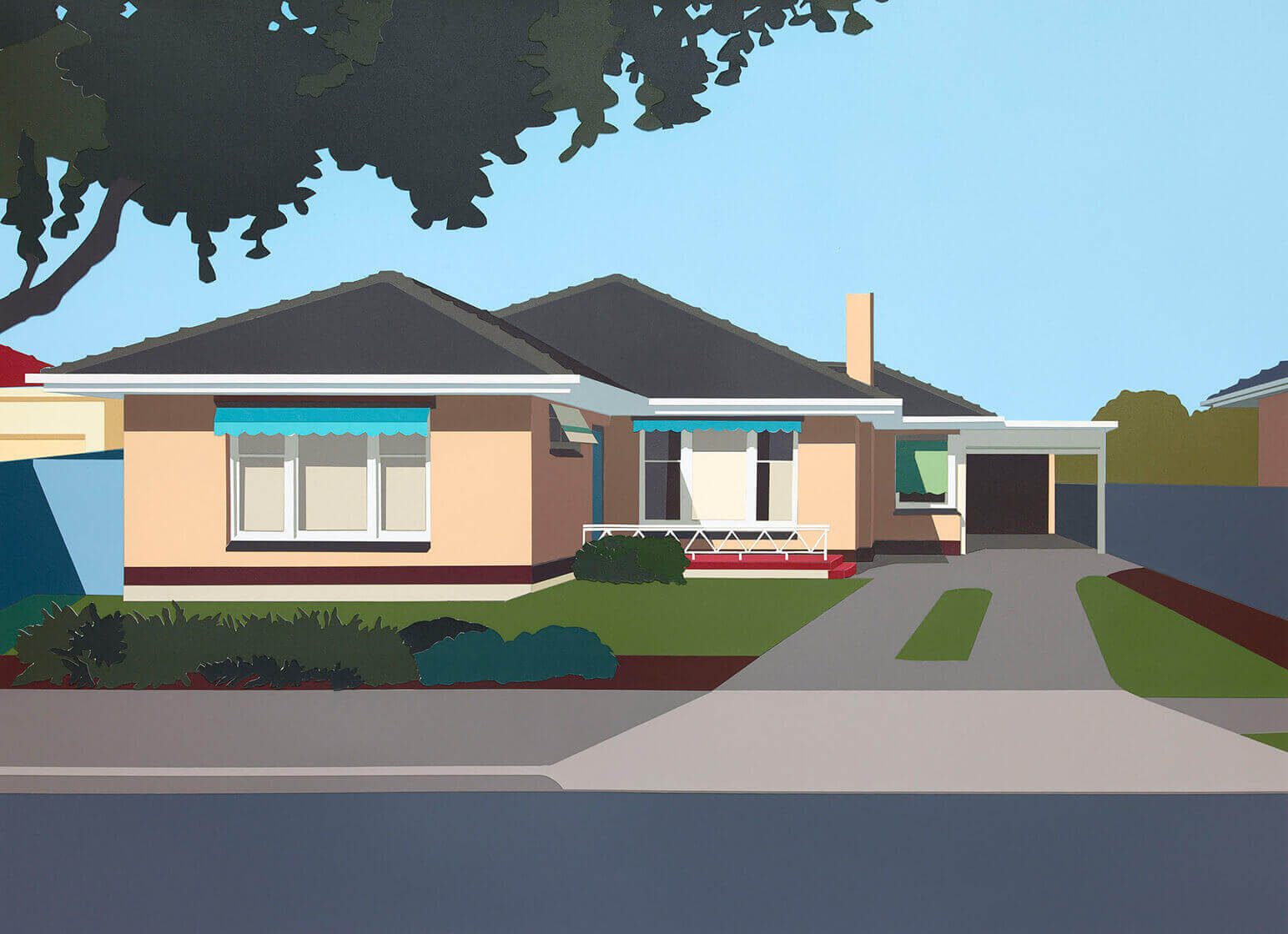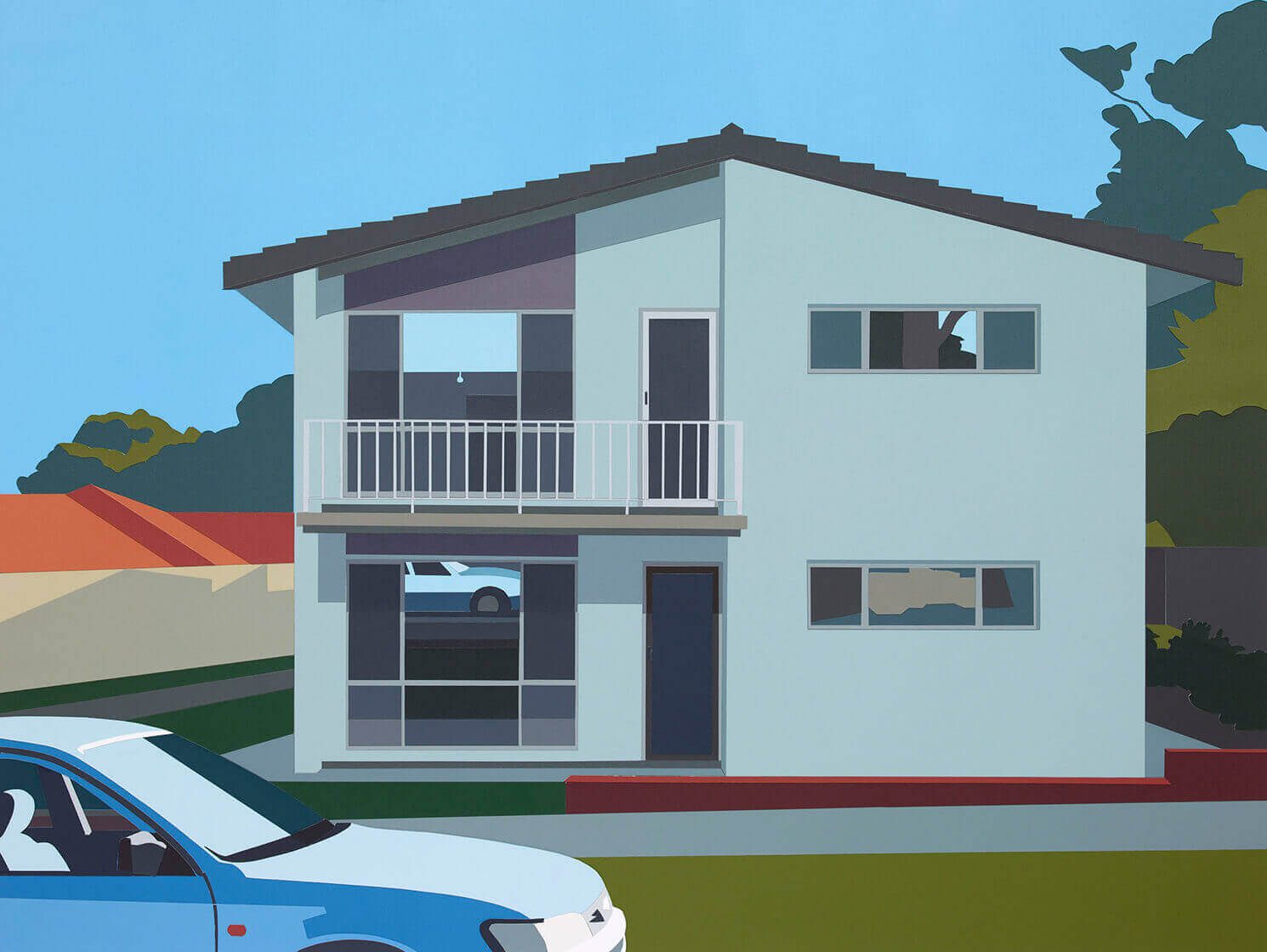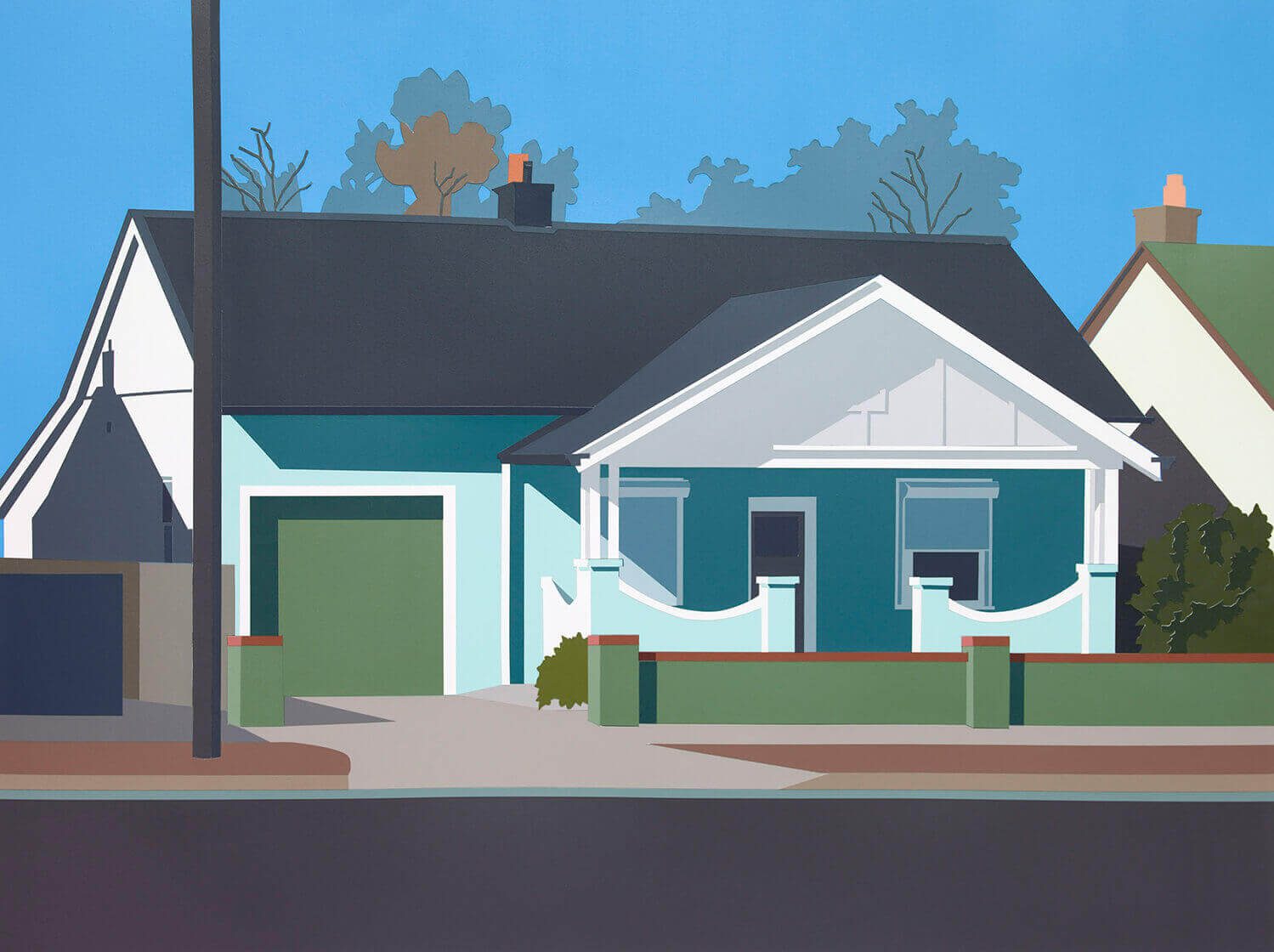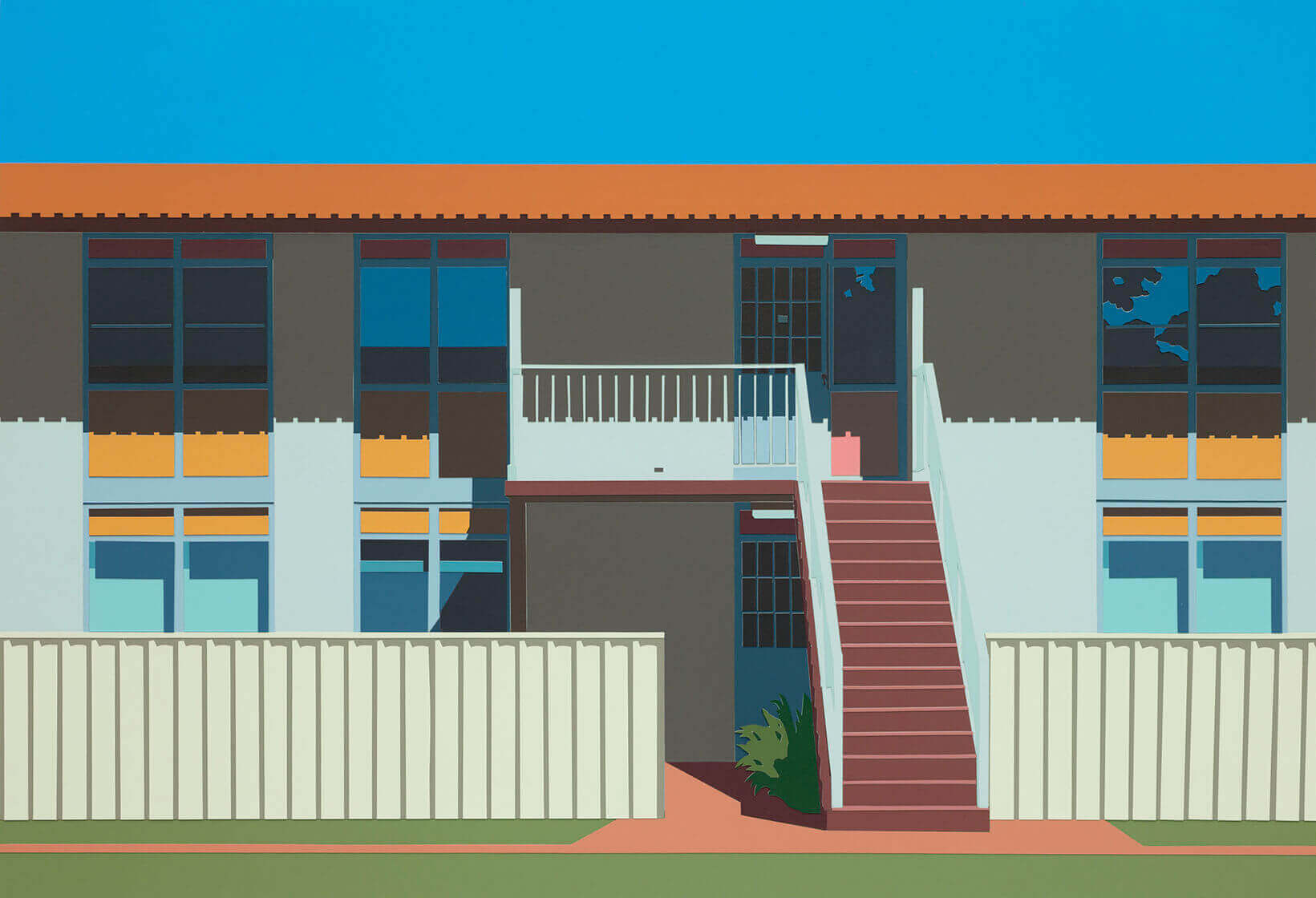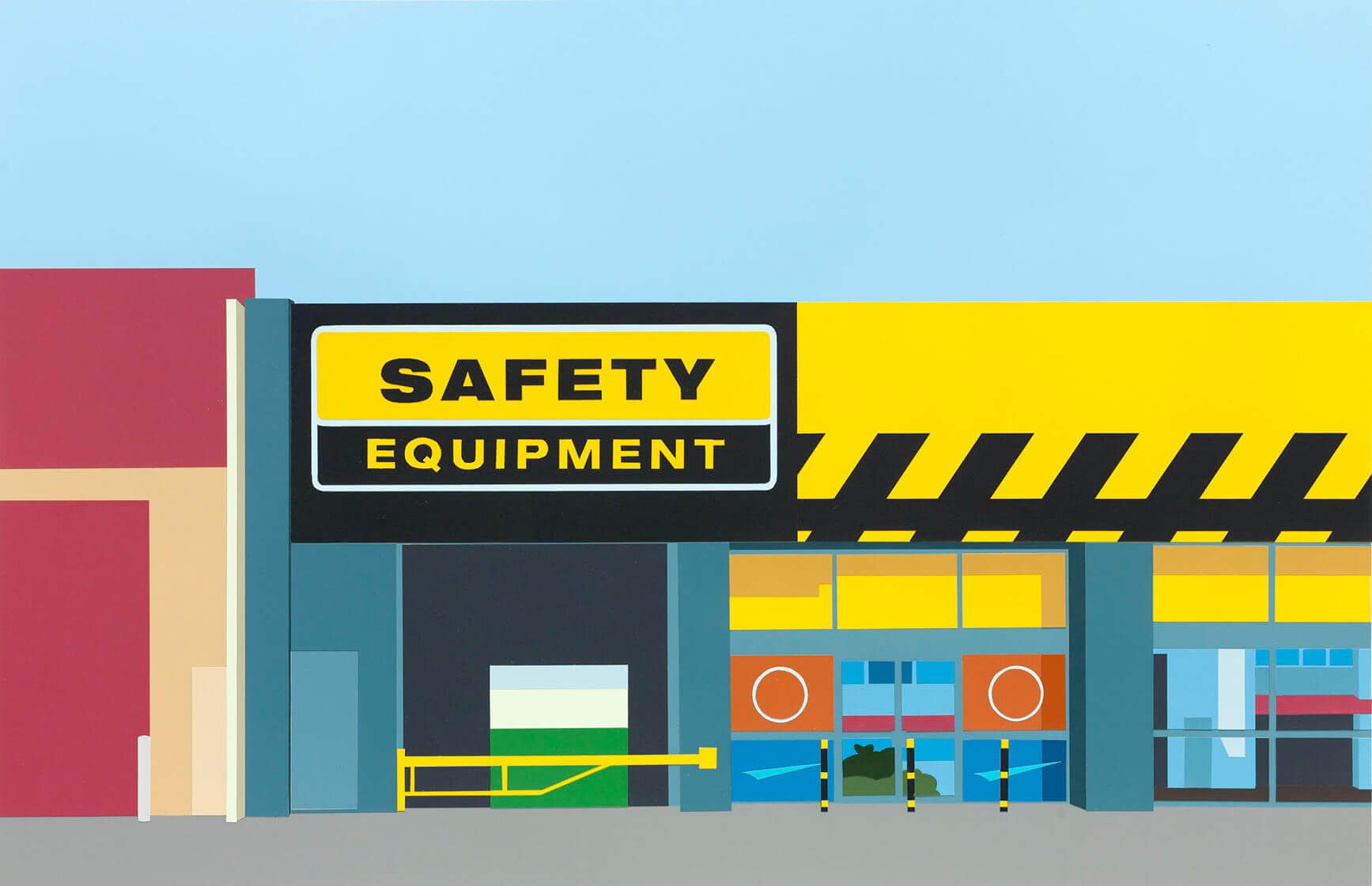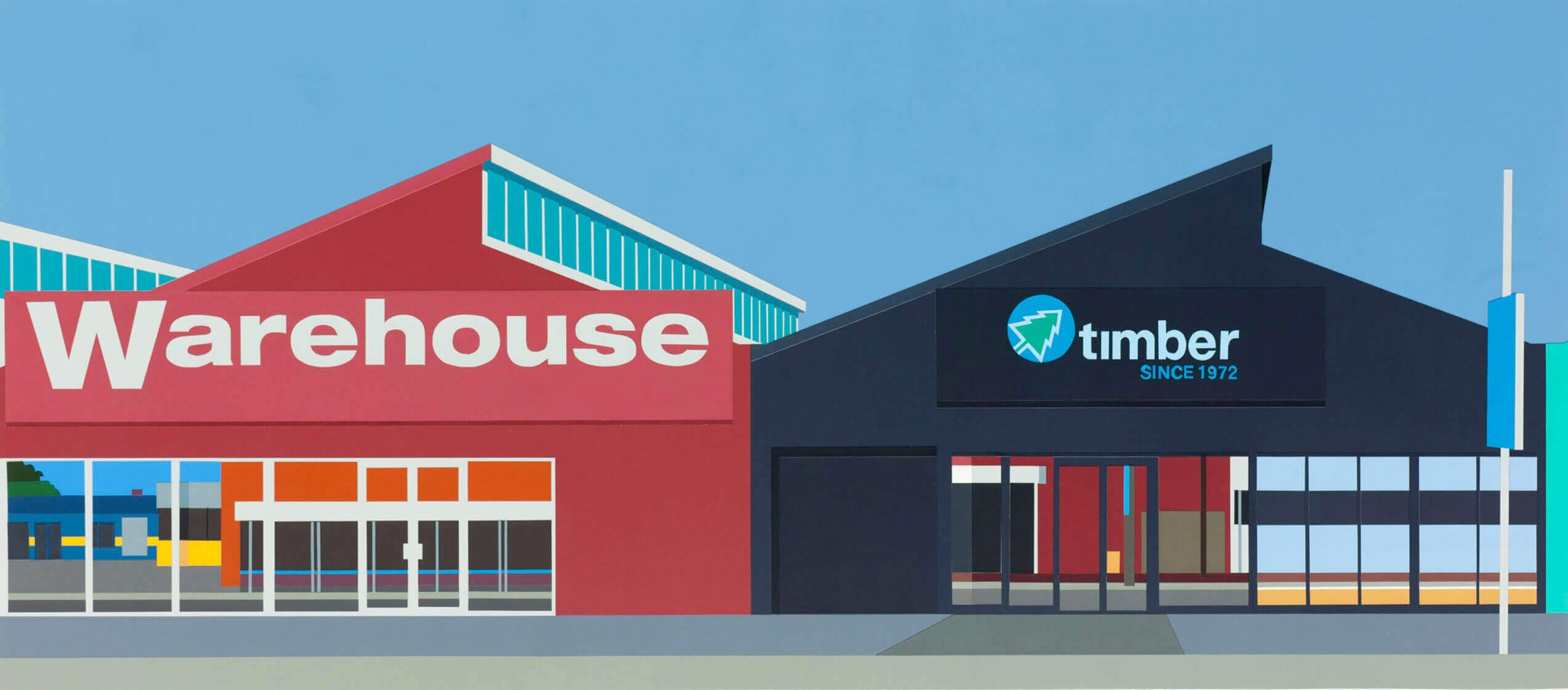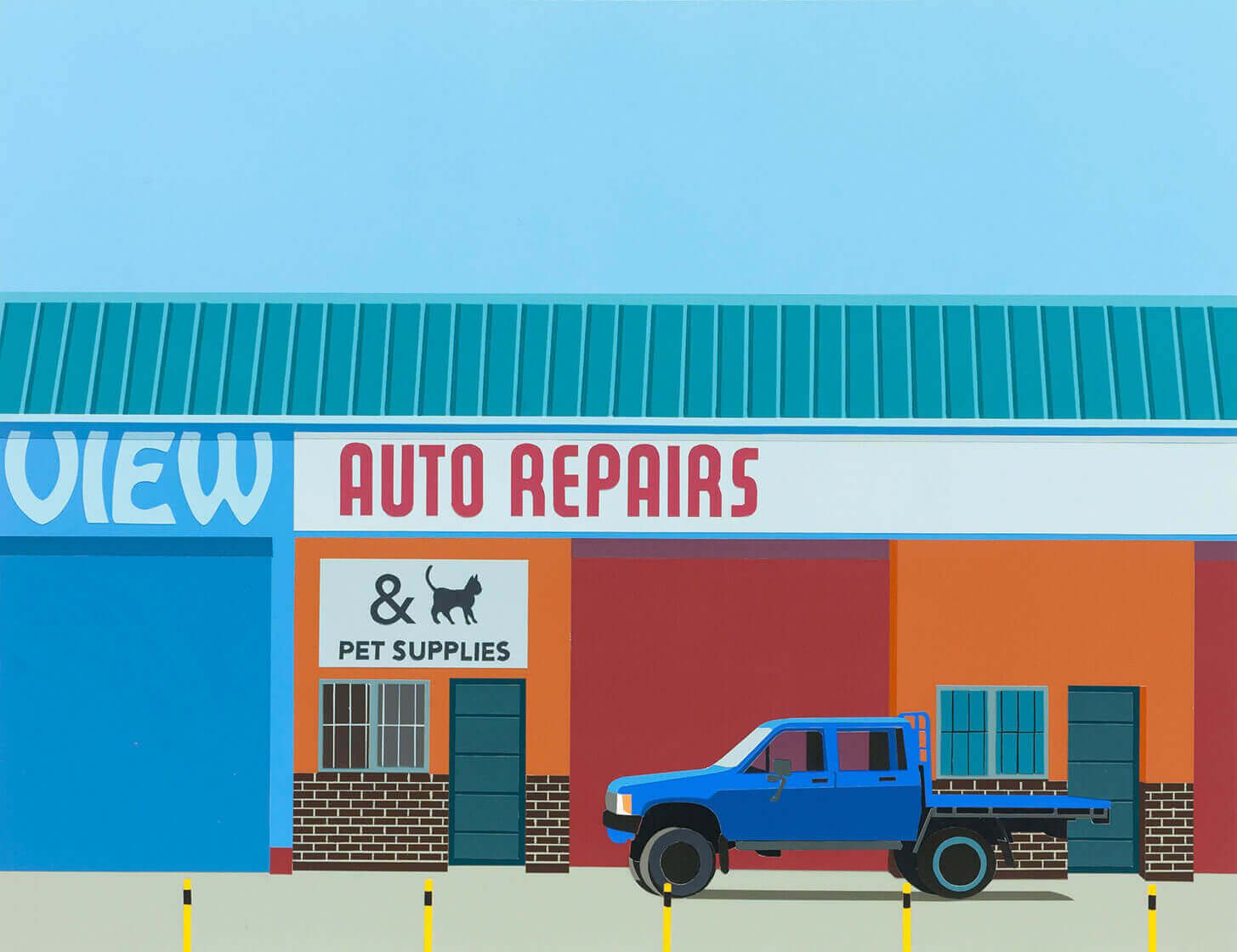This is Nowhere October–November 2017, Art Collective WA
This is Nowhere
Joanna Lamb, October 2017
These pictures are based on existing houses and locations in Western Australia, and further afield as far as Albury, in New South Wales. Often the more interesting houses are the older ones that appear more settled in their foundations and sit in contrast to encroaching, newer developments. As a result, the works are often openly nostalgic.
The collage works, originally intended as preliminary drawings or sketches for larger paintings, have evolved to become a focussed extension of my practice. They have a less mechanical and more tactile feel than the larger paintings. There is evidence of the handling of the knife in the cutting of the paper. There is a softness to the paper and a vibrancy to the paint which is not so obvious in my paintings. The layering process used in the collages is similar to the layering that happens in the paintings although it is more evident in the collages and shows the thinking process behind the work.
Colour plays a central role in the works. In its flat un-textured state colour becomes more dominant. With the licence afforded to me as an artist, colour changes the narrative, mood, visual impact and energy of the work. It is the tool at hand that compels me more than any other.
The industrial landscapes become generic environments that are read more abstractly as formal investigations into colour and shape. Once again there are individualising elements but they are absorbed into a never ending strip of haphazard design and signage.
While these works illuminate identifying and individualising aspects of place they are also unspecific and implicate many places in their vaguely familiar scenarios. They are at once nowhere and everywhere.
